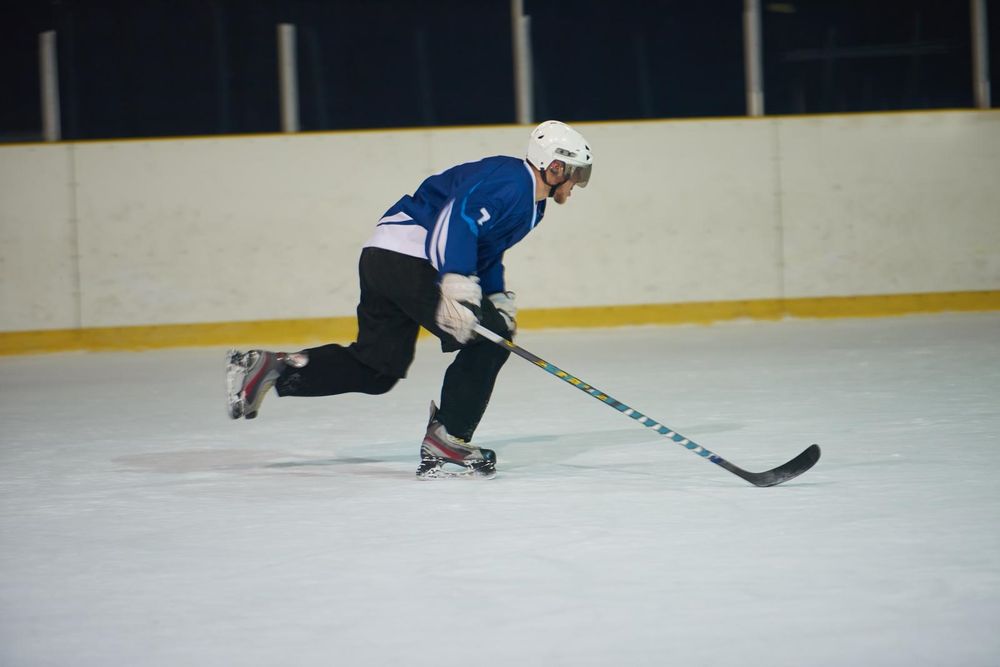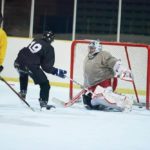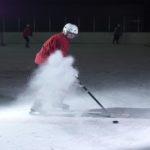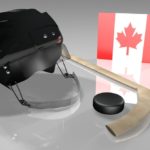In the realm of hockey, the act of spitting has become a prevalent and widely accepted behavior among players. Whether it’s during intense gameplay or as a pre-game ritual, hockey players are often seen spitting on the ice.
But have you ever wondered why? This article, aims to explore the reasons behind this seemingly peculiar phenomenon.
One key factor lies in the high-intensity exercise experienced by these athletes in cold air, leading to saliva and mucus buildup that necessitates the need to spit. Furthermore, breathing through the mouth during physical exertion causes dry, cool air to enter the lungs, resulting in increased phlegm production.
By delving into the reasons for hockey players’ frequent spitting, we hope to shed light on this intriguing aspect of the sport.
Physical Exertion and Cold Air
The physical exertion and exposure to cold air experienced by hockey players contribute to their increased spitting frequency. During high-intensity exercise, such as hockey, the body produces more saliva to aid in the breakdown of food particles and lubricate the mouth.
This increased saliva production is a natural response to physical exertion and helps maintain oral health. In addition, breathing through the mouth during exercise allows dry, cool air to enter the lungs, leading to increased phlegm production.
The combination of cold air and exercise can result in mucus buildup, which can be uncomfortable for players. Spitting helps clear the airways and improve breathing during intense physical activity. It allows players to expel excess saliva and mucus, enhancing their performance on the ice.
Dry Air and Increased Phlegm
During high-intensity exercise in cold air, hockey players experience an increase in phlegm production due to the dryness and coolness of the air. The effects of dry air on athletic performance can be significant, as it can lead to discomfort and hinder breathing efficiency.
When the air is dry, it lacks moisture, which can cause the mucus membranes in the respiratory system to become dry as well. This dryness can stimulate the glands to produce more mucus to keep the airways moist and protected.
Additionally, the relationship between humidity and mucus production is important to consider. In dry air, the lack of humidity can exacerbate the production of mucus, making it more difficult for hockey players to breathe comfortably during intense physical activity.
Understanding the impact of dry air on mucus production can help athletes better manage their respiratory health and optimize their performance on the ice.
Mucus Buildup and Improved Breathing
A significant increase in mucus buildup during high-intensity exercise allows hockey players to enhance their breathing efficiency.
Mucus, a viscous substance produced by the respiratory system, plays a crucial role in maintaining respiratory health.
During intense physical activity, the body’s demand for oxygen increases, resulting in a rapid exchange of air in the lungs. This process, combined with the cold air typically found in hockey arenas, can lead to an excess production of mucus.
By spitting out the excess mucus, players can clear their airways and improve their breathing during the game.
Effective mucus management is essential for optimal respiratory function, allowing players to perform at their best on the ice.
Avoiding Excess Water Consumption
To manage their hydration levels effectively, hockey players employ the practice of spitting out excess water consumed during gameplay. This technique is crucial for avoiding excess water consumption and maintaining optimal performance on the ice.
Here are some spitting techniques and hydration strategies used by hockey players:
- Controlled Spit: Players use precise spitting techniques to expel just the right amount of water without wasting any. This allows them to stay hydrated without feeling weighed down by excessive fluid intake.
- Mouth Rinse: Instead of swallowing water, players rinse their mouths and spit it out. This helps hydrate the mouth without taking on excess water, ensuring optimal performance without compromising comfort.
- Strategic Timing: Hockey players carefully time their water intake and subsequent spitting to avoid disruptions during gameplay. By following a hydration schedule, they can stay focused and hydrated without compromising their performance.
Benefits of Spitting Out Drinks
Spitting out drinks offers several advantages for hockey players, enhancing their performance and hydration levels on the ice.
One benefit is the ability to rinse the mouth with a carbohydrate solution, such as a sports drink, which has been shown to improve performance in high-endurance exercise.
By spitting out water after drinking, players can hydrate their mouths without taking on excess water, avoiding the feeling of being weighed down. This allows them to replace the fluid lost through sweating without consuming too much, maintaining optimal hydration levels.
Additionally, spitting out drinks can help players avoid swallowing excess water, which can be uncomfortable and potentially impact their performance.
Spitting as a Cultural Ritual
Spitting, deeply ingrained in the traditions and rituals of hockey, has become a prominent cultural ritual among players. It is a habit that is not exclusive to hockey, but is observed in many other sports as well. When it comes to spitting etiquette, hockey players have their own set of unwritten rules.
To create imagery in the audience’s mind, consider the following sub-lists:
- Spitting on the ice:
- Players often spit on the ice during breaks in the game.
- The act of spitting on the ice is seen as a way to mark territory.
- It symbolizes the players’ presence on the ice and their commitment to the game.
- Spitting in the locker room:
- In the locker room, spitting is a common sight.
- It is a way for players to release tension and prepare mentally for the game.
- Spitting in the locker room is seen as a bonding ritual among teammates.
- Spitting on the bench:
- During the game, players may spit on the bench.
- It is a way to clear their mouth and improve breathing.
- Spitting on the bench is seen as a practical necessity rather than a cultural ritual.
While some may find spitting unpleasant, it is widely accepted and normalized in the hockey community. Similar to other sports, spitting has become a cultural ritual that is deeply ingrained in the traditions of the game.
Frequently Asked Questions
What Are Some Common Misconceptions About Why Hockey Players Spit?
Common misconceptions about hockey players spitting include assumptions that it is solely due to tobacco use or simply a habit. However, the reasons behind excessive spitting in hockey are primarily related to the physical demands of the sport and the need for improved breathing and hydration.
Are There Any Negative Effects of Spitting During a Hockey Game?
The negative effects of spitting during a hockey game can impact both player health and hygiene. Spitting can spread germs and bacteria, increasing the risk of infections. Additionally, saliva can create slippery surfaces on the ice, leading to accidents and injuries.
How Does Spitting Affect a Player’s Performance on the Ice?
Spitting can positively impact a player’s performance on the ice by aiding in hydration and improving breathing. Understanding spitting techniques and its effect on hydration can help hockey players optimize their gameplay and enhance their overall performance.
Are There Any Rules or Regulations Regarding Spitting in Professional Hockey?
Spitting regulations in professional hockey vary. While there are no specific rules against spitting during games, it is generally discouraged. However, spitting during practice is more accepted as players often spit to clear their airways and improve breathing during intense physical activity.
Does Spitting Have Any Impact on the Spread of Germs or Diseases Within the Hockey Community?
The impact of spitting on the spread of germs and diseases within the hockey community: An analysis reveals that while spitting itself may not directly contribute to the spread, it is crucial to promote hygiene practices and educate players on proper respiratory etiquette to minimize potential risks.
Conclusion
In conclusion, the prevalence of spitting among hockey players can be attributed to the physical demands of the sport, the effects of cold air on the respiratory system, and the need to avoid excessive water consumption.
Spitting serves as a means to clear airways, enhance breathing, and maintain hydration. It has also become a cultural ritual within the sport.
Like a well-executed slapshot, the act of spitting has become an ingrained part of hockey’s unique identity, adding to the intrigue and intensity of the game.









